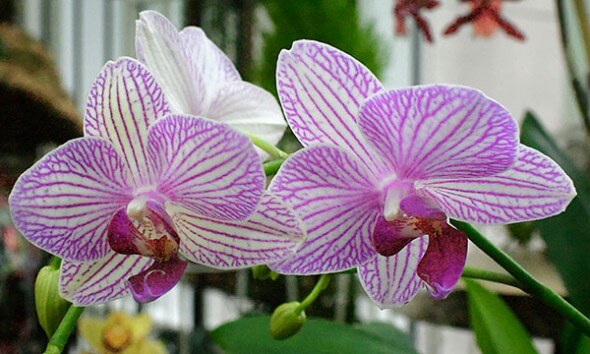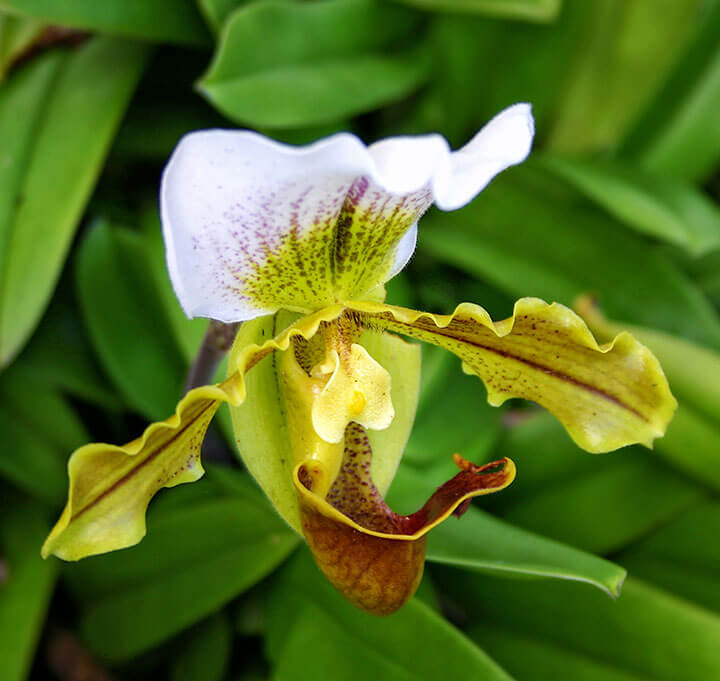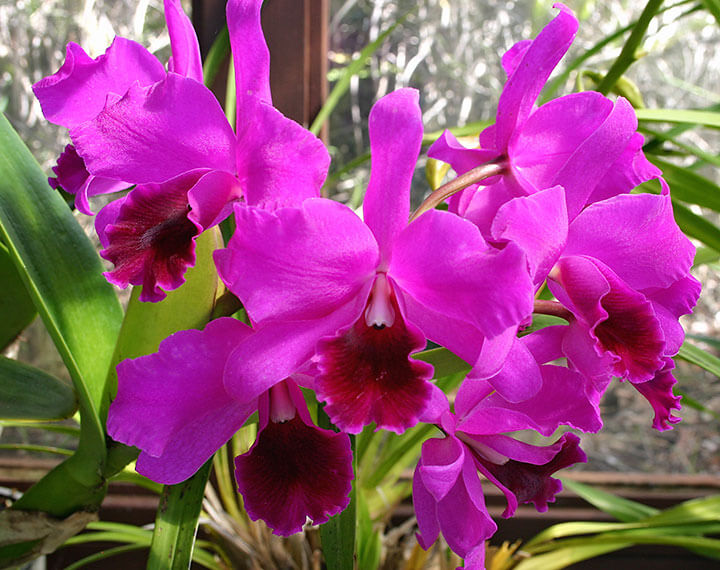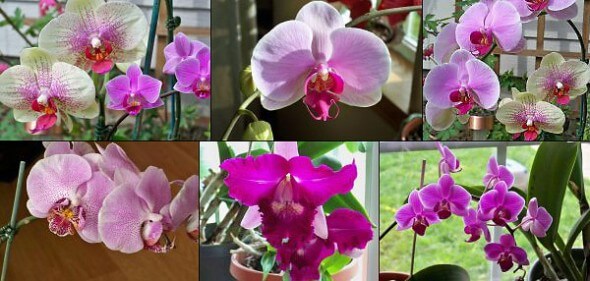In spite of the internet and its excess information, one of the last holdouts for actual paper catalogs must be the garden seed companies. When they start to arrive in my mailbox (a real, old fashioned mail box that gets paper letters and catalogs), I know that spring cannot be far away. Just looking at the front covers of these catalogs gets my mind thinking about what I am going to do this year in the garden!
But back to reality: this is January, winter is still here and since we do not have much color outdoors, it is nice to see something blooming in the house. Have you given any thought to growing orchids indoors for winter color in your home? We see blooming orchids at many grocery stores and they are often purchased for their flowers, which last for weeks, and then unfortunately the plant is discarded. Often orchids are overlooked as a permanent house plant, perhaps because of an undeserving reputation of being ‘fussy’ or hard to grow and that is not the case. Orchids do have some unique growing requirements, but certainly nothing that is difficult to learn.
Probably the most unique aspect of growing orchids indoors is that they grow best in an orchid bark rather than a traditional potting soil. Lucky for us Black Gold has the products needed to grow orchids in a home setting. Orchids need extremely fast drainage and often the plants are grown in an actual bark type medium. Black Gold has a quality bark/media mix called Black Gold Orchid Mix that is great for cultivating many orchids. The unique orchid mix is a blended combination of small bark, Canadian Sphagnum peat moss and perlite and/or pumice. There is a small amount of lime added and so this product is ready to use.
Many orchid growers like to use just bark as a potting medium and others like to use bark and blend it themselves with pumice or perlite and sometimes even adding small amounts of charcoal. Charcoal is excellent for helping with aeration and charcoal has the ability to help remove excess moisture.
Black Gold Orchid Mix is good for semi-terrestrial orchids, such as Paphilopedium and Cymbidium, which tend to have thinner roots that need more water retention. Compare this to orchid bark, which is perfect for epiphytic orchid for types like Odontoglossum, Phalaenopsis, and Cattleya and other medium rooted varieties. A note here about orchid roots and that is many orchid plants have a tendency to send out roots above the soil or bark level in the pot and these roots will grow and often extend out over the side of the pot. These roots should NOT be cut off as they are helpful to the overall vigor of the plant.
Lisa Long of St. Helens, Oregon is an Oregon State University Master Gardener and has been growing orchids indoors and out for nearly 20 years. She grows orchids on her windowsill in trays of pebbles. A small amount of water is in each tray with the level of it being just below the bottom of the orchid pot. The water will supply much need humidity in a dry indoor environment. The windowsill offers the light conditions they need; bright light but indirect sunlight in the summer. Also, try to keep the plants away from an area with drafts whether it is a door, window or heating vent.
Lisa waters her plants weekly and uses a weak strength of a water soluble plant food. She suggests new orchid growers join a local orchid society if there is one in your area. You can learn many tips from those that have been growing orchids. Learn what species you have and follow a water and fertilization schedule depending on the particular requirements that species has. Overwatering is the most common cause of orchid death. Lisa also reports that orchids, as well as many other house plants, will benefit from a weekly dusting. Lightly wipe the leaves with a damp paper towel. She also recommends re-potting them about once every year and add fresh bark or whatever potting medium you are using. When you re-pot one, select a pot that is just the next size larger.
With the vast number of varieties available, it is possible to have orchids in bloom at any month of the year. Do not be discouraged if the plant you bought from a local store does not repeat bloom for a year, or even two. This is not unusual and as long as the plant is healthy, it is just getting settled into its’ new environment.
So the next time you buy a blooming orchid, do not consider it a dispensable, one-time blooming plant to discard when the flower is gone. Instead, treat it with some tender care and you could have a plant that will continue to grow, thrive and bloom for many years.
Photos courtesy of Rich Baer and Lisa Long





